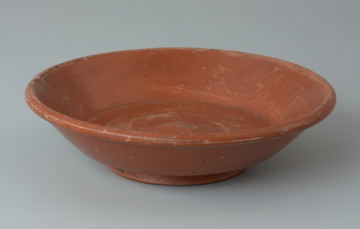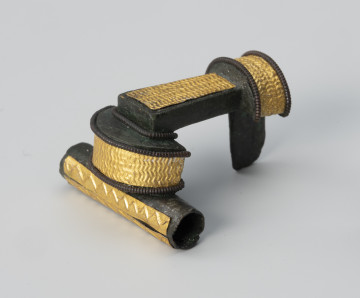
Terra-sigilata vessel, clay, Gronowo, Drawsko poviat
National Museum in Szczecin
Part of the collection: Antiquity
The Roman oil lamp (lat. lucerna) is classified as the “Firmalampen” type. The circumstances of its discovery are unknown. The clay oil lamps were everyday objects, mass-produced in ancient Rome. Craftsmen often made them in series, using two-part moulds or the potter’s wheel. Given the rich and varied figural depictions on some specimens, Roman olive lamps constitute today an important iconographic source. Apart from mythological scenes, they also depict the images from the everyday life of the Romans. Thanks to their aesthetic value, small size and availability, these antique, richly decorated olive lamps have always been a popular tourist souvenir. They often ended up in museums, given as gifts, without identifying their place of origin. Additionally, due to the great interest of tourists in the ancient olive oil lamps, high-class forgeries soon appeared, which are actually still produced today. Most probably, the olive lamp “from Słupsk” was also purchased in an antique shop or brought home as a travel souvenir. There are no olive lamps among the objects imported to Western Pomerania in the Roman period discovered at archaeological sites. Apparently, these objects were not of interest to local communities.
Bartłomiej Rogalski
Author / creator
Dimensions
cały obiekt: height: 3.4 cm, width: 10.5 cm
Object type
dance card
Technique
form imprpessing
Material
clay
Creation / finding place
Owner
Muzeum Narodowe w Szczecinie
Identification number
Location / status

National Museum in Szczecin

150 — 200
National Museum in Szczecin

150 — 200
National Museum in Szczecin
DISCOVER this TOPIC
National Museum in Lublin
DISCOVER this PATH
Educational path